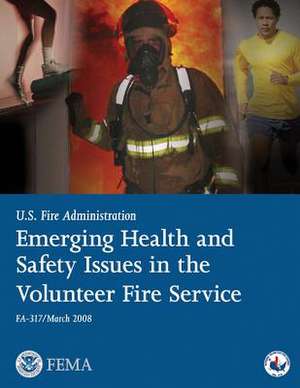Emerging Health and Safety Issues in the Volunteer Fire Service
Autor U. S. Department of Homeland Security, Federal Emergency Management Agencyen Limba Engleză Paperback
Preț: 85.72 lei
Nou
Puncte Express: 129
Preț estimativ în valută:
16.40€ • 17.87$ • 13.82£
16.40€ • 17.87$ • 13.82£
Carte disponibilă
Livrare economică 02-16 aprilie
Preluare comenzi: 021 569.72.76
Specificații
ISBN-13: 9781492943723
ISBN-10: 149294372X
Pagini: 38
Dimensiuni: 216 x 279 x 2 mm
Greutate: 0.11 kg
Editura: CREATESPACE
ISBN-10: 149294372X
Pagini: 38
Dimensiuni: 216 x 279 x 2 mm
Greutate: 0.11 kg
Editura: CREATESPACE
